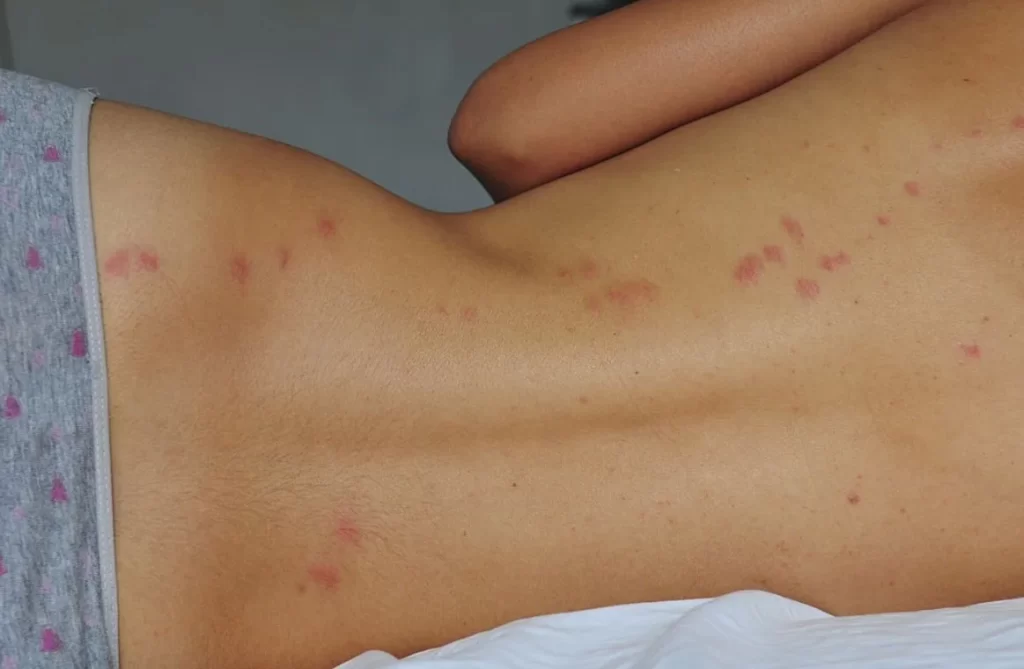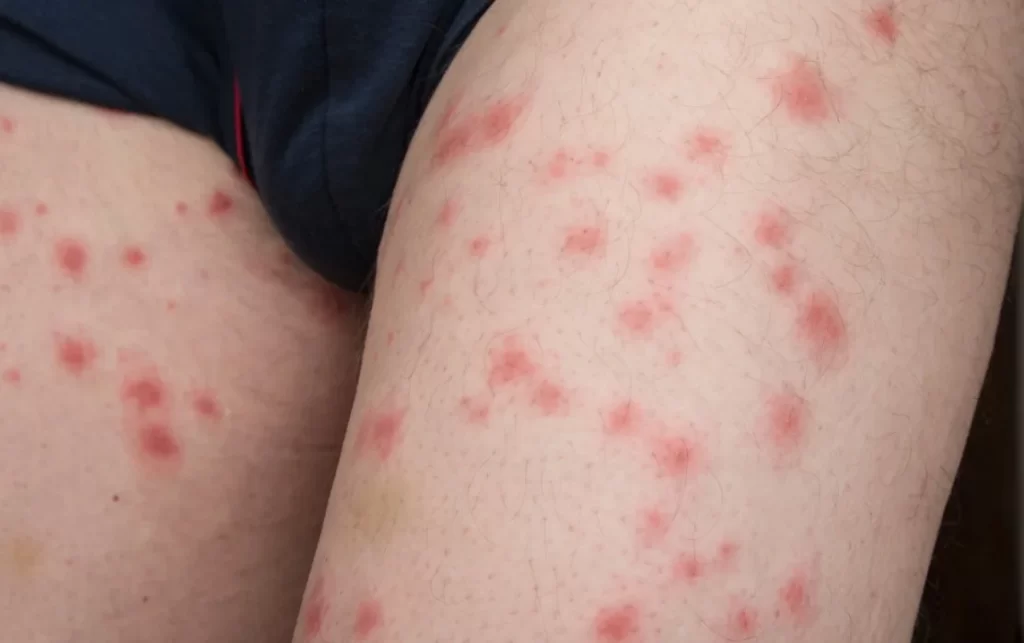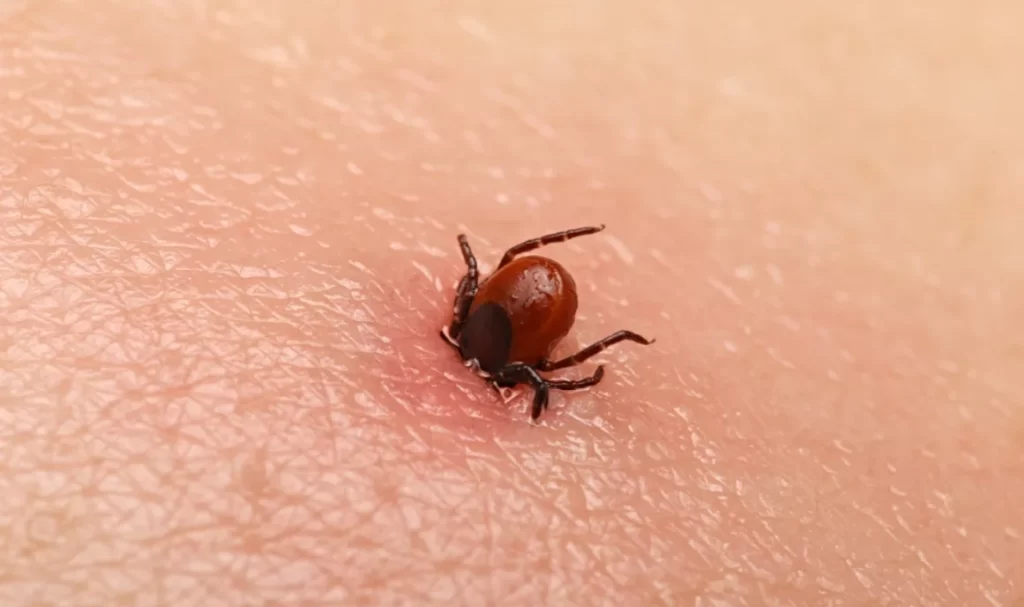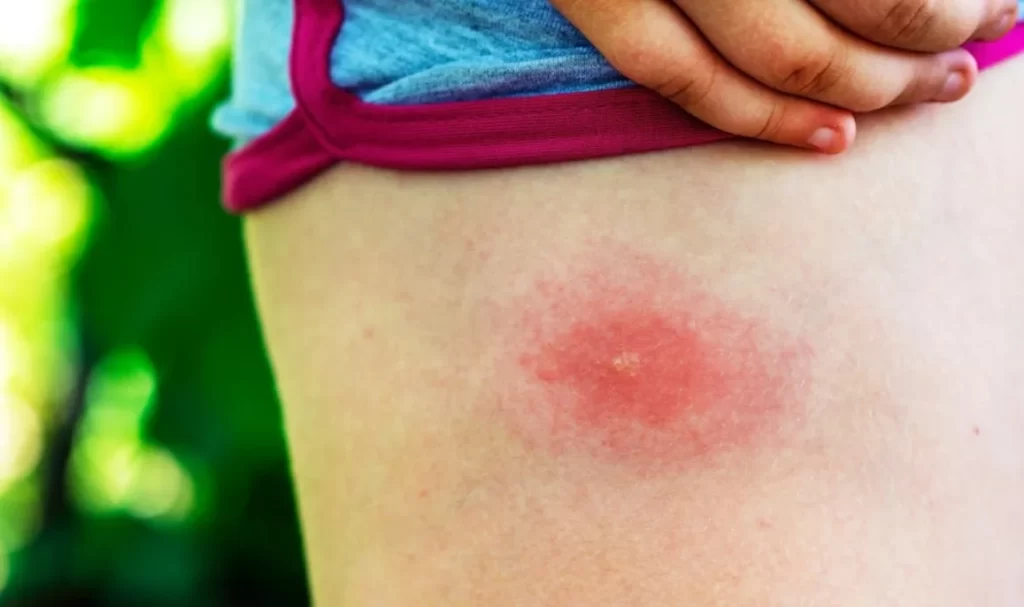No one is winning in the fierce race between the two most harmful bites, “bed bug vs tick bites,” but sadly, you are losing since your life is in grave risk.
Imagine you need to distinguish between bed bugs and ticks in a complex. In such situation, there are a number of differences (covered in full in this article), but both are terrible bugs, which is one thing they have in common.
The mere mention of these bloodsuckers might make you want to throw up. There are many things to watch out for if we scroll down the list of harmful effects of bed bug bites versus tick bites.
You most likely never had the opportunity to see a bed bug vs. tick battle in real time, and you most likely won’t ever see one.
This article, which includes reliable material verified through reliable sources, is the only way to learn about them.
Although both are extremely deadly, we frequently mix up bed bugs with ticks. Continue reading this post to clear up any confusion and learn the key distinctions between bed bugs and ticks.
The primary worry is how to prevent these nasty parasites; who is more hazardous and the distinction between bed bugs and ticks is the least important issue.
Read this post carefully to learn how to tell a bed bug from a tick and, more importantly, how to avoid getting bitten.
Page Contents
Bed bug vs tick pictures
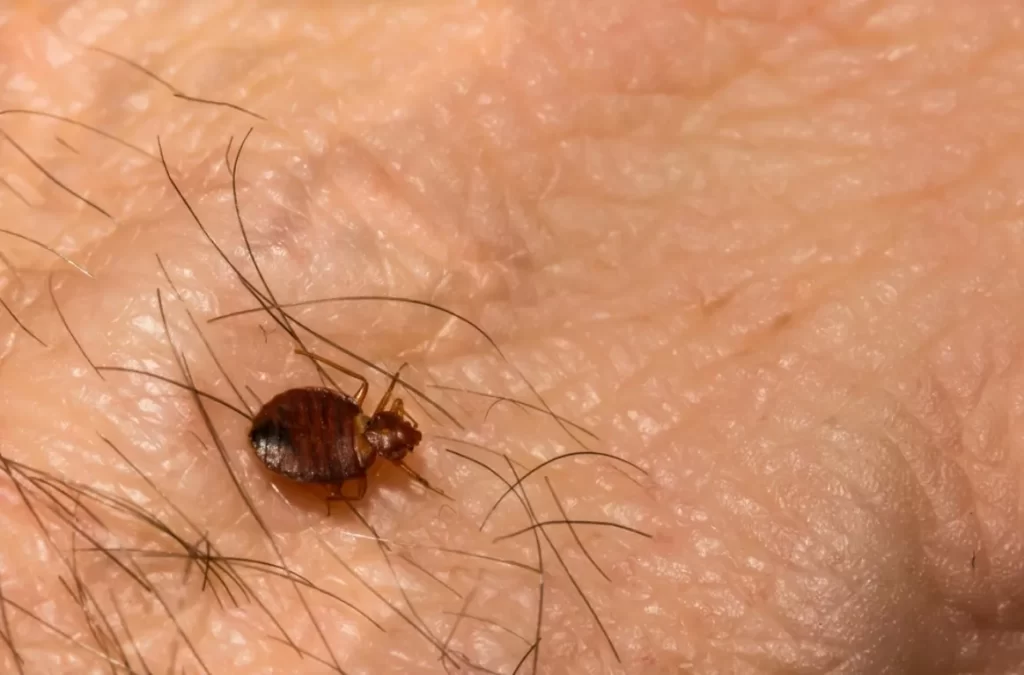
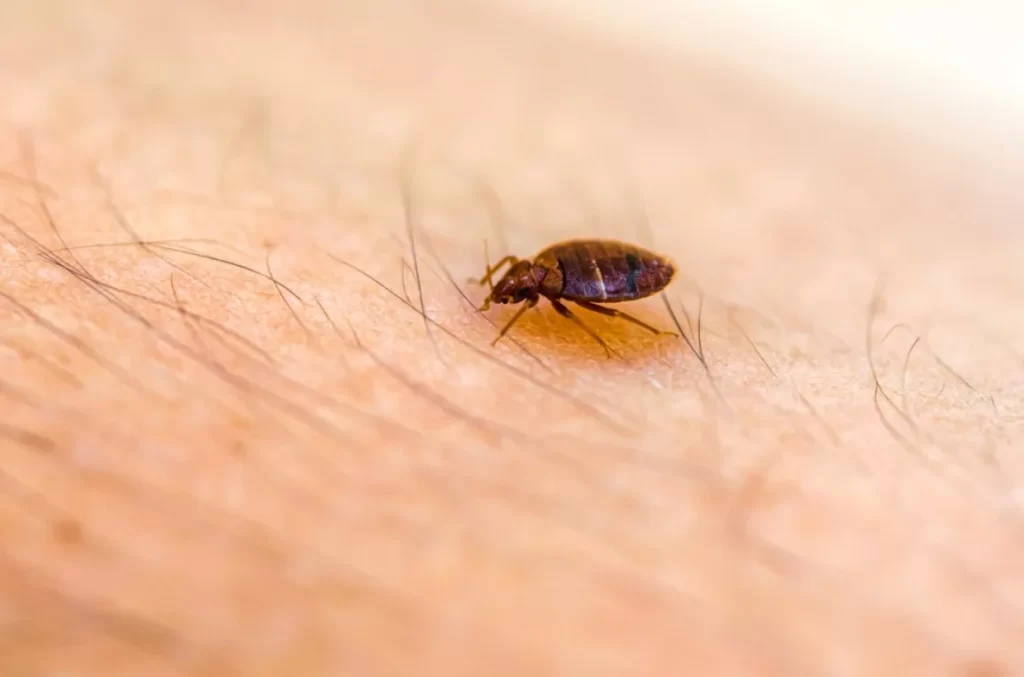
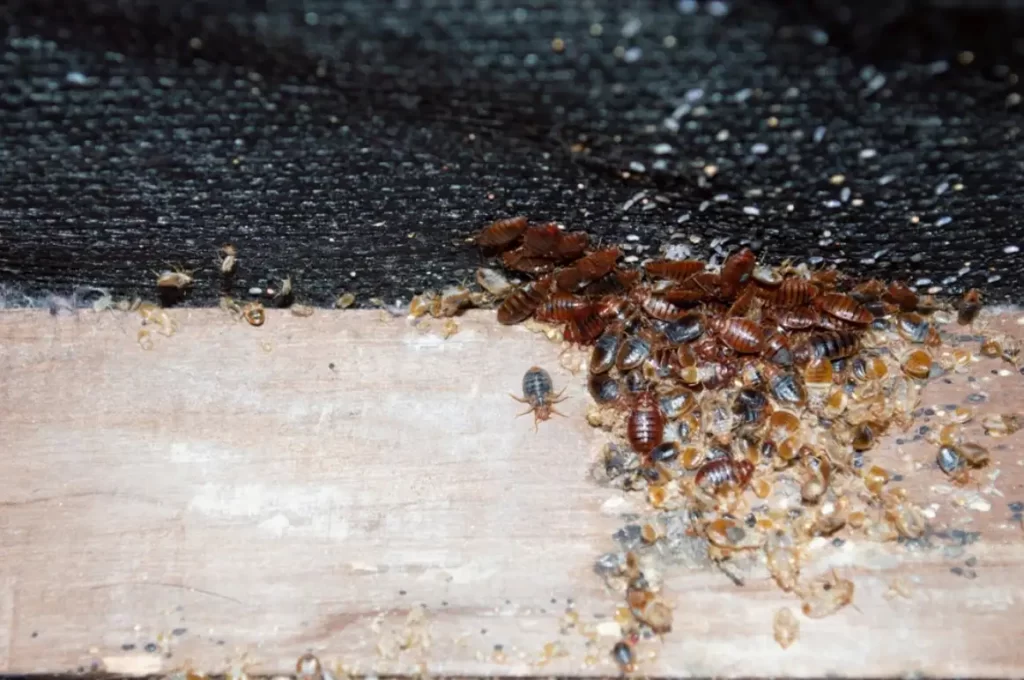
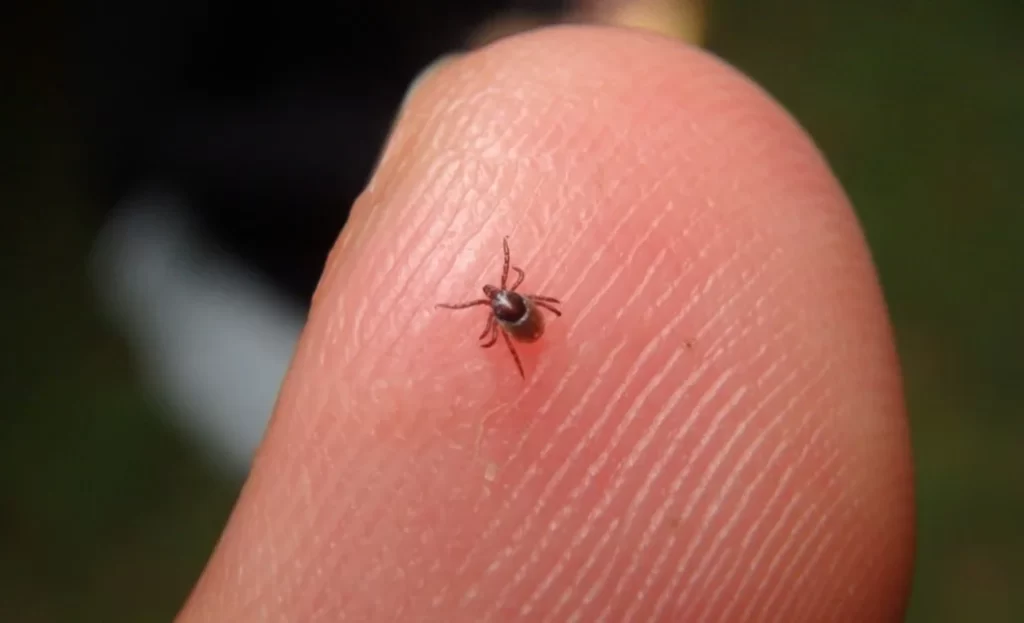
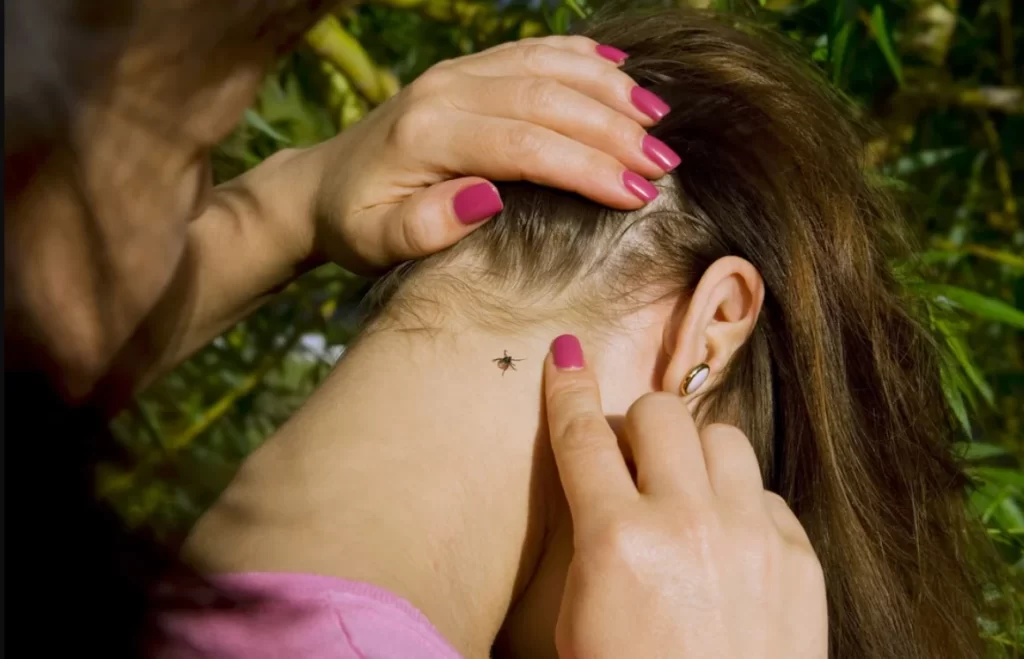
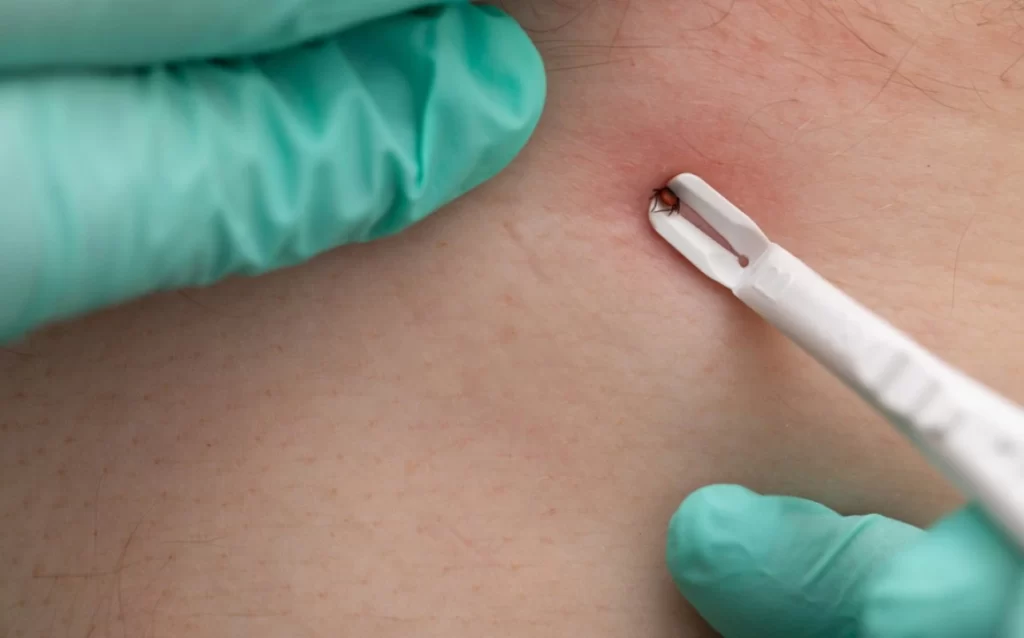
What are bed bugs?
Bed bugs are wingless pests that are quite small. They are not limited to feeding on the blood of animals but can also consume human blood. Bed bugs can grow up to half a centimeter long as adults and have a coloration that can range from dark yellow to a reddish-brown hue. They are roughly the size of an apple seed.
Bed bugs can be found not only in beds, but also in other pieces of furniture, as well as in cracks and fissures in walls and floors. They are active only at night and come out to feed then. They are nocturnal.
Due to the fact that they are drawn to the warmth and the carbon dioxide that is created by their hosts, they are most frequently found in beds.
Bed bugs are not known to spread diseases to humans, but the bites they leave behind can be irritating and annoying.
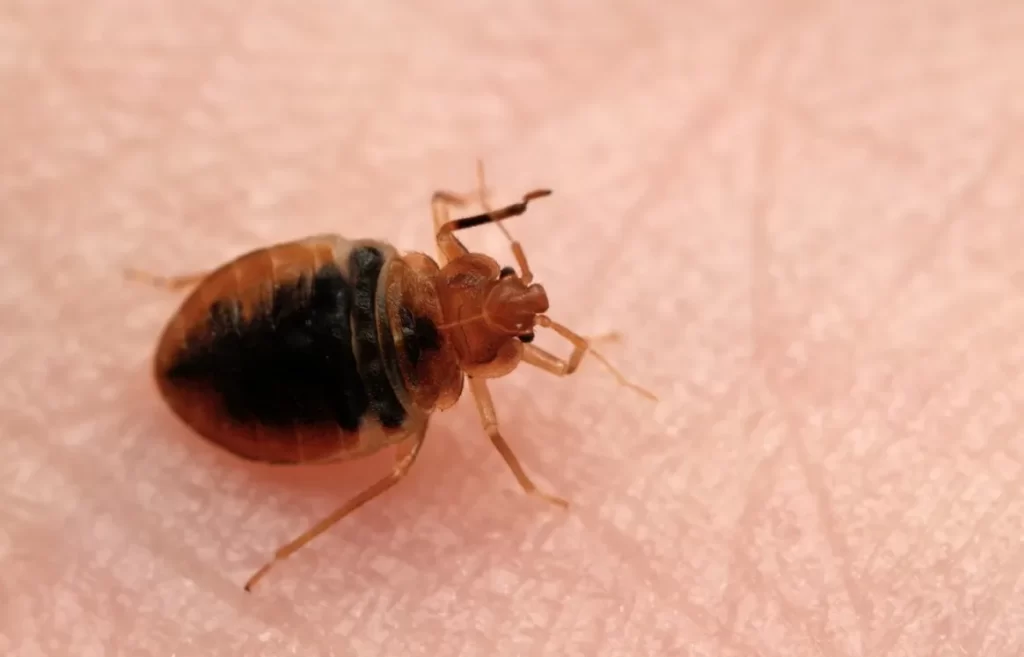
What are ticks?
Ticks are very little insects that sometimes have the appearance of spiders, although they are, of course, quite different from spiders. Ticks, like bed bugs, may draw their nourishment from the blood of both animals and humans.
They may attach themselves to any region of the body, although the scalp, armpits, and groin are the places of the body where they are most regularly seen. They are typically found in grassy or forested environments.
Ticks are infamous when it comes to disease transmission. They can transmit several dangerous diseases to humans, such as Crimean-Congo haemorrhagic fever, Rocky Mountain spotted fever, Tick-borne encephalitis, Lyme disease, and tularemia.
It is essential to take precautions against ticks whenever one is outdoors by avoiding strolling through tall grass and applying insect repellent.
If you discover a tick on your body, it is imperative that you remove it in a methodical and meticulous manner in order to prevent illness.
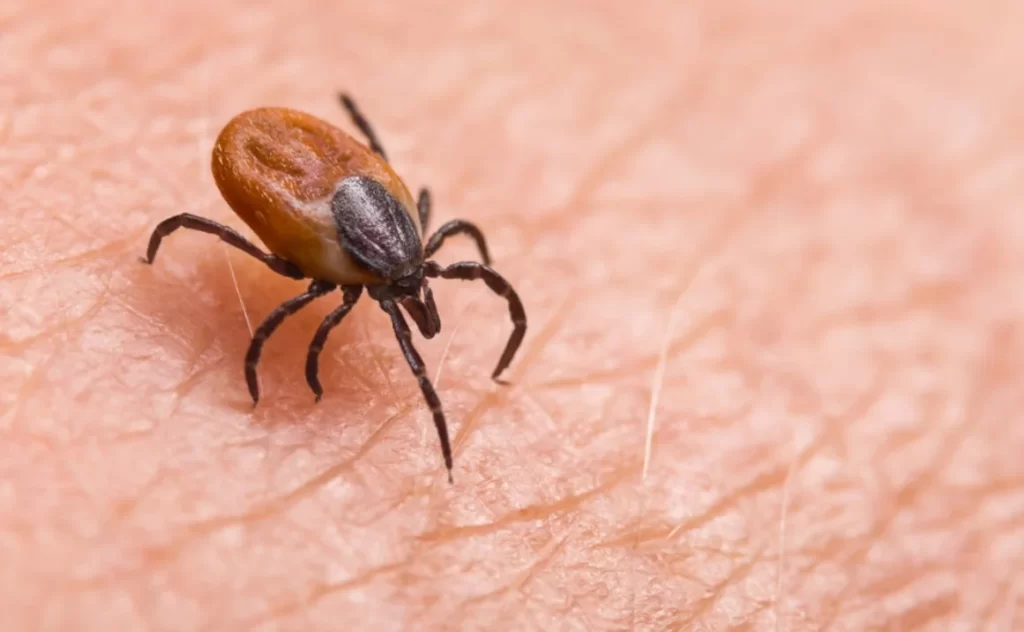
How big is a bed bug as compared to a tick?
If we compare bed bug vs tick size, apparently, bed bugs are a little bit larger in size as compared to ticks.
The creator has created these pests with six legs, and the approximate length of the body is 4mm.
After blood feeding, the color appearance transforms from brown to reddish-brown, and along side color, the body size also enlarges from 4mm to mm – equivalent to the size of a watermelon seed.
Unlike ticks, they do not transmit viruses from one person to another.
On the other hand, ticks have been created with eight legs and belong to the arachnid family. You’ll be shocked by the fact that; spiders are also members of the same family.
Ticks’ size varies according to the types of hosts. For instance, the size of deer ticks is approximately equivalent to that of a poppy seed or 1mm.
A wood tick is 2.5 mm long – the exact size of a sesame seed. Like bed bugs, the size of ticks also increases double or triple times the original size, which is horrifying.
Several variants of ticks with different sizes and colors are sucking blood or eating the host inside.
Still, the one common dangerous trait in all species is their ability to transmit bacteria from one host to another. Sometimes, pick harmful bacteria from the animal body and transmit them to the human body.
Bed bug vs tick size
Bugs that look like bed bugs
Nothing can be scarier than seeing a bed bug crawling on your bed sheet or your body when you wake up after a bug bite.
When you are already struggling to differentiate between a bed bug vs tick, the fact that several bugs look similar to bed bugs will be an addition to your complexity about bed bugs.
Before you pay for an expensive bug treatment, let’s briefly discuss the pests that look like bed bugs.
- Baby Cockroaches are often confused with bed bugs because their appearance by color matches bed bugs.
- Due to their translucent white to gray or brown color, Booklice Mistakenly considered bed bugs, which is invalid.
- Carpet Beetles have six legs and are similar in shape to bed bugs. That’s why people often consider their bed bugs.
- Spider Beetles look like bed bugs because of their large and rounded abdomens – also, they feed on blood.
- Bat Bugs and bed bugs have oval bodies and short, broad heads attached to the prothorax. The only difference between both is hair on the thorax; bat bugs grow long hair than bed bugs.
- Fleas have narrow bodies and spiny legs that support them to move quickly on woven fabrics like bed sheets. So, next time you confuse fleas with bed bugs, confirm them by long legs with long hair.
- Head Lice are host-specific pests, which means dog lice will not transmit to your body, and the lice infesting your body will keep sucking your blood because they cannot jump or fly.
- Mites and bed bugs may look similar, but they are different. Primarily, they feed themselves on decaying bodies. So, an alive human shouldn’t be worried about mites.
Bugs that look like ticks
Bed bug vs tick mystery is not less complex than solving the mystery of Bermuda Triangle – debate ended.
Most of the bugs that look like ticks are insects that resemble ticks in appearance. Ticks are small, arachnid creatures that are commonly found in areas with tall grass or vegetation.
They are known for their ability to attach to the skin of animals and humans and feed on their blood.
Bugs that look like ticks may have similar physical characteristics, such as a small, oval-shaped body and long, thin legs. However, they are not ticks and do not have the same behavior or biology.
Some examples of bugs that may resemble ticks are briefly discussed below. It is important to properly identify any insect that you come into contact with, as some bugs that look like ticks may be harmful or carry diseases.
- Weevil Beetles are scary to look because they look similar to ticks but it is just a common weevil. Like casual bud, it has six legs, three body parts and 2 stubby antennae. In comparison, an adult tick has 8 legs and antennae to communicate.
- Red Velvet Mites are arachnids, related to spiders, and are known for their bright red or orange color. Ticks, on the other hand, are small, and spider-like creatures typically, brown or black in color.
- Brown Marmorated Stink bugs are easily identifiable by their brown, mottled coloring and shield-shaped bodies. They also emit a strong, unpleasant odor when disturbed or crushed. BMSBs a majorly agricultural pest, causing damage to crops such as apples, peaches, and soybeans.
- Varied Carpet Beetles (Anthrenus verbasci) can easily be identified by small, oval-shaped insects that are commonly found in homes. They are black with white, brown, and yellow markings, and they have a distinctive pattern of spots on their wings.
- The common flea is a small, wingless insect that is commonly found on dogs and cats. Unlike ticks, they can jump long distances, thanks to its powerful hind legs.
- Black Aphids are small, black insects with pear-shaped bodies and long, slender antennae. They are often found in clusters on the undersides of leaves and on stems. Fortunately, Black Aphids will not suck your blood because they feed on plant leaves.
- Drugstore Beetle, also known as the biscuit beetle gets its names because they eat drugs, spices, and grains. The adult beetles are about 1/8 inch long and have a reddish-brown color with a rounded shape and small, oval-shaped scales on their wing covers. The larvae are white or cream-colored and have a distinctive, C-shaped appearance.
- The Larder Skin Beetle (Dermestes lardarius) is a small, dark brown or black beetle that is commonly found in pantries, larders, and food storage areas. It is typically found in warm, and humid environments.
Bed bug vs tick bites: Whose bite is more harmful?
The bites of bed bugs and ticks are two distinct forms of insect bites.
Bed bugs are tiny insects without wings. They are able to consume both animal and human blood.
They are often found in beds, however they can also be found in other furniture and in cracks and crevices in walls and floors.
Bites from bed bugs are often tiny, red, irritating, and develop in a line or cluster on the skin.
Ticks are little, spider-like insects that feed on the blood of animals and humans.
They often inhabit woodland or grassy regions and may adhere to any portion of the body.
As previously indicated, ticks are notorious for disease transmission. They may spread various severe illnesses, including Crimean-Congo hemorrhagic fever, Rocky Mountain spotted fever, tick-borne encephalitis, Lyme disease, and tularemia, to people. Typically painless, tick bites can produce redness and edema.
By their position on the body, bed bug bites and tick bites may be distinguished from one another.
Bed bug bites are frequently located on areas of exposed skin, such as the arms, neck, and face, whereas tick bites are typically found in locations where clothing is snug, such as the scalp, armpits, and groin.
In addition, bed bug bites often develop in a line or cluster, whereas tick bites are typically solitary.
Bed bug vs tick bites pictures
What kills bed bugs instantly?
There is no one method that will completely get rid of bed bugs. The best method for eradicating a bed bug infestation is a mix of treatments, including as thorough cleaning, vacuuming, and pesticide application.
It is crucial to rigorously follow the instructions on the product label when using chemicals to kill bed bugs and to select bed bug control-specific solutions.
It is crucial to treat both the locations immediately surrounding the area where bed bugs have been found in order to stop the infestation from spreading.
In addition, expert pest control services might be necessary to completely get rid of a bed bug infestation.
How to get rid of bed bugs and ticks?
A thorough and efficient pest management strategy must be followed to get rid of bed bugs and ticks.
This can entail using cleaning agents, vacuuming, and chemicals all at once. You can take the following actions to get rid of bed bugs and ticks:
- Find the locations where bed bugs and ticks are a problem. To do this, you might need to do a comprehensive search of your house, paying particular attention to the bedrooms, furnishings, and any other places you may have noticed the insects.
- Vacuum and thoroughly clean the contaminated areas. You may use this to get rid of any bed bugs, ticks, and related detritus that may be present. Pay close attention to any nooks and cracks where insects could be lurking.
- Use pesticides to get rid of ticks and bed bugs. There are several items on the market that are intended to kill these insects. Use the product as directed by the manufacturer and be sure to carefully follow the directions on the product label.
- Keep checking the affected areas for any lingering ticks or bed bugs. To entirely eradicate the infestation, the treatment may need to be repeated numerous times.
To properly get rid of bed bugs and ticks, it could occasionally be essential to hire a professional pest control service.
They will be able to correctly detect the infestation and carry out an efficient management strategy thanks to their experience and knowledge.
I found a tick in my bed, are there more?
You should assume that there are additional ticks around if you have found one in your bed. Ticks are notoriously hard to find because they conceal themselves in tiny cracks and crevices.
You can do a thorough inspection of the room to see if there are any more ticks in your bed. Small, black insects may be hiding in your mattress, bed frame, and other furniture, so make sure you check for them.
Additionally, you should check for ticks that may have adhered themselves to your skin.
Careful tick removal is required to prevent further illnesses if more ticks are found.
Cleaning and vacuuming your home regularly, as well as using chemicals to kill ticks, may be necessary.
Can ticks live in your bed?
Even while ticks might technically call your bed home, that environment is not ideal for them. Ticks thrive in dense vegetation or regions of long grass because they have more opportunities to adhere to passing animals or people.
However, ticks may also be transferred indoors on a person’s clothing or a pet’s fur, increasing the likelihood that you will find them in your bed.
Without a host, ticks may go without food for months at a time, so they may hang around in your bed for a while.
Regular cleaning and vacuuming, as well as measures to deter ticks from entering the home, can help keep them from making your bed their home.
Protect yourself against ticks by taking precautions including applying repellents, maintaining a short grass lawn, and inspecting yourself and your pets for ticks after being outdoors.
How do you confirm you have bed bugs?
Verifying the presence of bedbugs may be done in a number of ways. To seek for actual insect remains is the most usual and trustworthy technique.
Bed bugs are tiny, brownish-red insects. They’re around the size of an apple or pear seed. They like to hang around in the bedroom since that’s where they can get to a human host the quickest and drink their blood.
The following symptoms are indicative of a bed insect infestation:
- Bed bugs are most active at night, so a thorough inspection of your bed and its surroundings before bedtime may reveal any active bed bugs. Inspect the bed and the frame for the presence of tiny, black insects.
- Bed bugs produce tiny, white eggs—about the size of a human pinhead—in their nests. These eggs may be stowed away in the mattress or other cracks and crevices.
- In the event that you look closely at your mattress or your bedsheets, you may be able to detect little black or brown specks that are the feces of bed bugs. Bed bug feces and dried blood from its victims combine to form these stains.
- There may be little blood spots on your sheets if bedbugs have been feeding on you while you sleep. The presence of these marks indicates the presence of bedbugs.
It may be important to hire a pest control company if you think you have bed bugs but can discover no trace of them.
They know what to look for, and they have the training and equipment to determine if bed bugs are present in your house.
Final Verdict
Ticks are little, parasitic creatures that are commonly found in grassy or vegetated habitats, whereas bed bugs are tiny, reddish-brown insects that feed on the blood of humans and animals. Bites from both bed bugs and ticks can be dangerous.
At night, when people are sleeping, bed bugs are most active and spread throughout the bedroom and its surroundings.
However, ticks are common in outdoor settings and cling to hosts’ skin to suck on their blood.
Combining cleaning, vacuuming, and chemical treatments is essential for effective eradication of bed bugs and ticks. In severe cases, extermination efforts may need to be led by a licensed pest control company.
Featured image credit: Whitney Cranshaw, Colorado State University, bugwood.org | slight edits were applied | licensed under a Creative Commons Attribution 3.0 License.
- Where Can I Purchase Bed Bug Bombs? - January 30, 2023
- Where Can I Buy Something to Kill Bed Bugs? - January 30, 2023
- Where Can I Buy Bed Bug Spray? - January 30, 2023

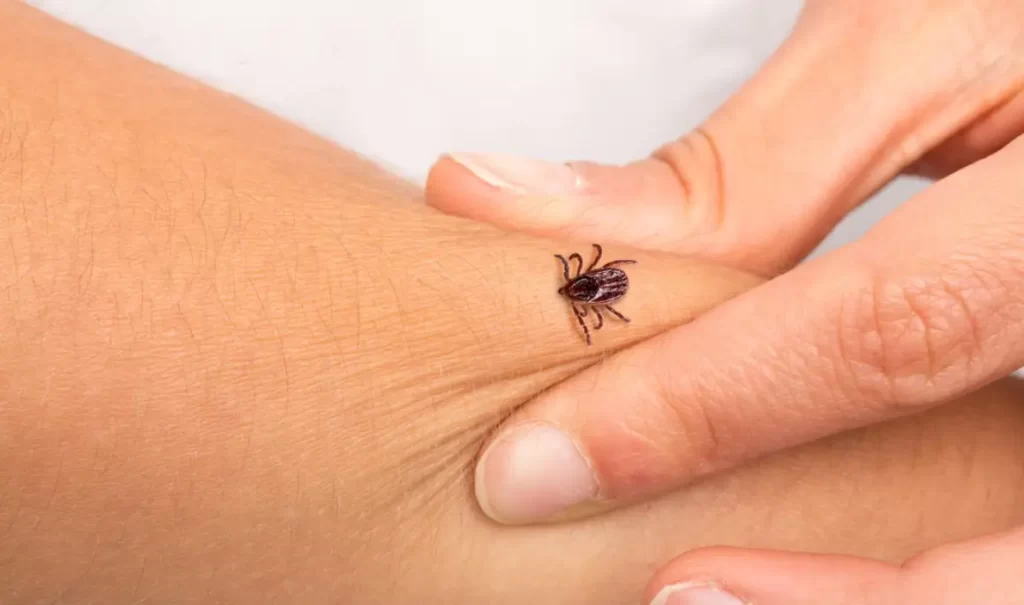
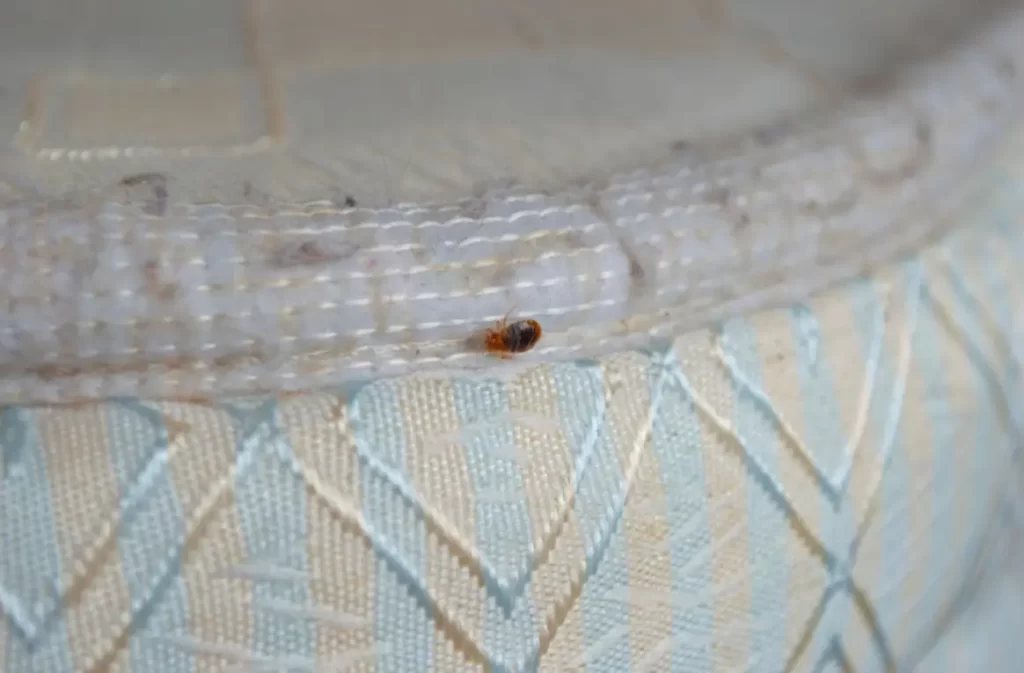
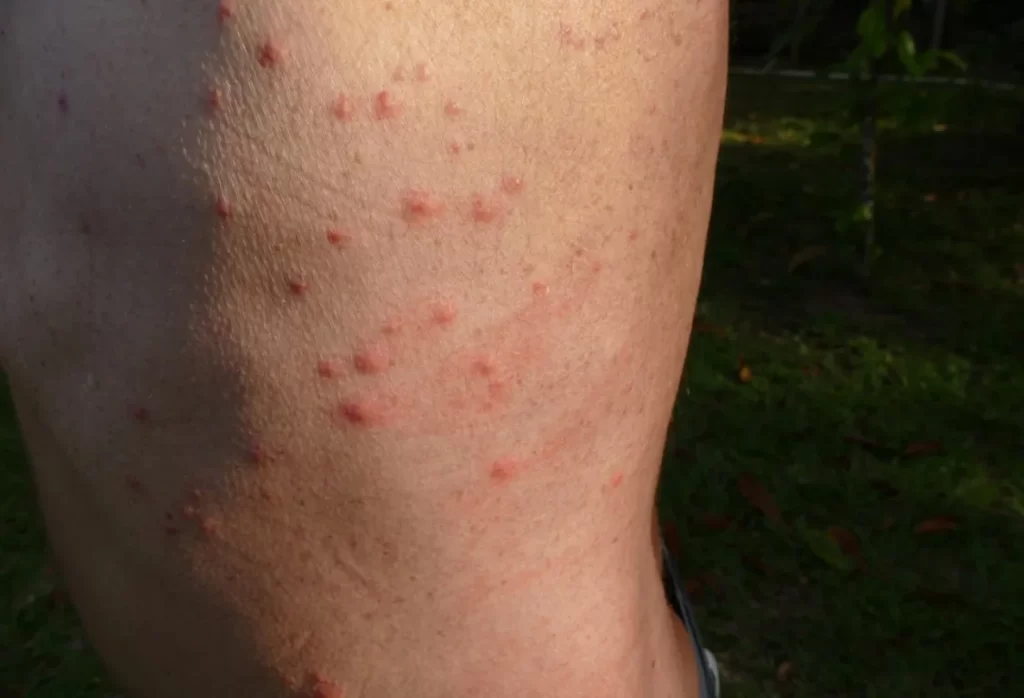 bites marks on skin (back)” title=”Bed bug bites marks on skin (back)” data-id=”1828″/>
bites marks on skin (back)” title=”Bed bug bites marks on skin (back)” data-id=”1828″/>